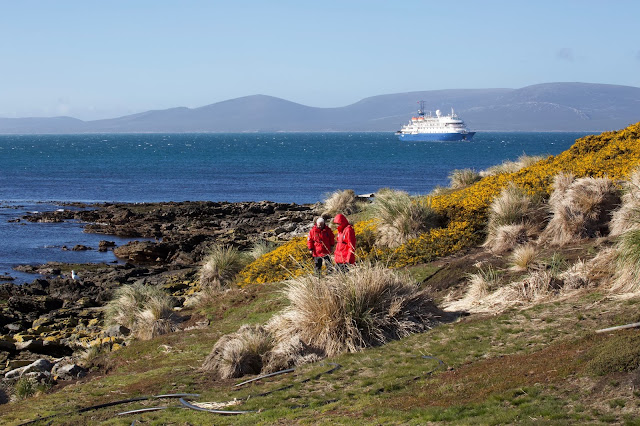Leaving Puerto Madryn, it took a little over two days to
reach Carcass Island, on West Falkland, and the site of our first zodiac
excursion. This island is 7.3 square miles in size, was named after HMS
Carcass, a ship under Captain John McBride, the original surveyor of the
island. The island is now privately owned and is operated as a sheep farm, bed and breakfast lodge and
location for visitors to view birds and sea mammals. There are five comfortable basic furnished farmhouse rooms at the Carcass Island Lodge. Meals are included as this is a pretty remote island with no other dining options.
Carcass Island was a great
location for birding enthusiasts. We observed at least 25 different bird
species, from large Albatross, Caracaras and Upland Geese to Antarctic Terns
and colorful Oystercatchers. It was about the only stop in which we didn’t see
elephant seals and fur seals lounging at waters edge, but I suspect we only got a glimpse of a small portion of the island during our three hour visit.
West Point Island was a highlight of our Falklands excursions.
There, zodiacs dropped us off on the wharf for a rare non-wet landing. We had an opportunity to take a short hike and stop within just a few
feet of nesting black-browed albatross and rockhopper penguins. It was terrific
to just sit a while and observe these birds in such close proximity. For those with mobility
limitations, Land Rovers were available to drive guests to the observation
area. Afterwards, the West Point caretakers invited everyone to teatime, with
hot tea and a tabletop full of assorted home-baked cookies.
West Point Island was our last expedition stop before heading to our disembarcation destination of Ushuaia, Argentina.
West Point Island was our last expedition stop before heading to our disembarcation destination of Ushuaia, Argentina.




































No comments:
Post a Comment